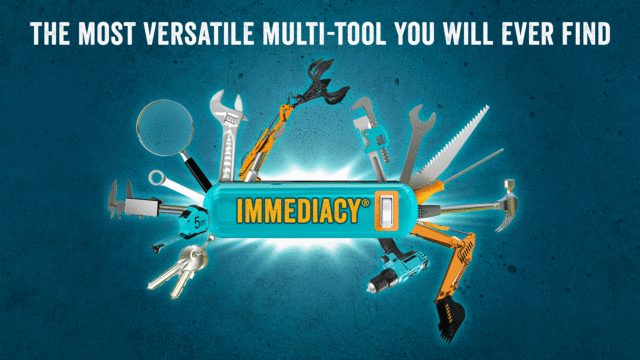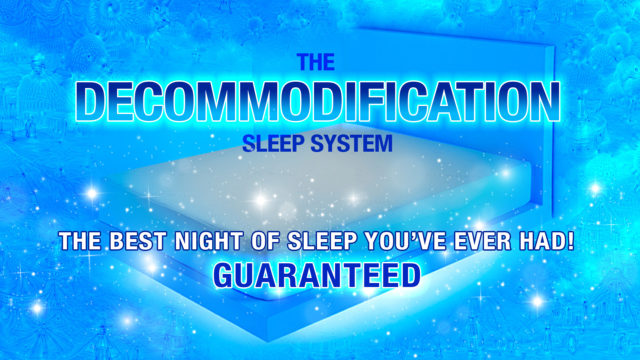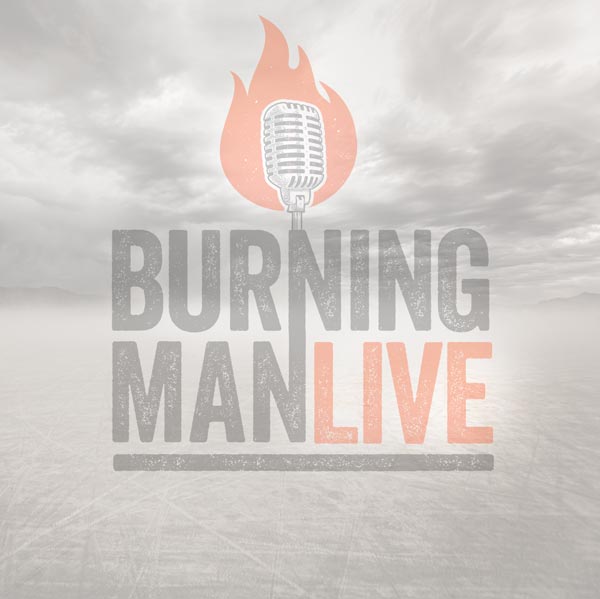
Narrative: Control & Liberty Through Stories
Guest host Rosie von Lila takes us on a journey through the form and formation of the stories we tell ourselves, the stories we teach, the stories we collectively assume are true. She explores the narratives of conflict and collaboration, of domination and partnership, and how they shape and shift the self and the culture.
She speaks with
- Caveat Magister, author and Burning Man philosopher
- Catherine Connors, author & CEO of The League of Badass Women
- Harley K Dubois, Chief Transition Officer of Burning Man Project
- Neil Shister, journalist & author of Radical Ritual
- Quest Skinner, Washington DC-based artist & activist
- Riane Eisler, social systems scientist & cultural historian
- Zach Bell, Founder & Editor of RETURN salon discussions
And Stuart’s in there too. And a narrator. And you if you choose.
Transcript
STUART: Hey everybody. Welcome back to Burning Man Live. I’m Stuart Mangrum. And this is a very special episode with our guest producer, the fabulous Ms. Rosie von Lila. Hey, Rosie.
ROSIE: Hey, Stuart.
STUART: Rosie and I have known each other for a lot of years. She’s been a long-time and very generous contributor to the work of the Philosophical Center and Burning Man philosophy and culture in general. It’s so great to have you here.
More than a year ago, when we first started talking about doing this podcast, I invited you to put together an episode, and here it is. You’ve of course exceeded everyone’s expectations and brought us in an episode that’s going to reset the bar and make everything else after it look kind of shitty.
Cause this is like a real professional radio show you did here. There’s even a narrator.
ROSIE: Which is very apropos for an episode about narrative.
STUART: We have obviously have a shared interest in storytelling and stories. I talk about stories all the time on here as being sort of the lifeblood or the DNA of culture. Our dear departed friend Larry Harvey, he, if you knew him, he pretty much never shut up – only to take a puff off a cigarette or to eat a bite of food or to sleep.
I look back at that and think that Larry was basically casting a spell. He was imagining the world that he wanted to see in words – and lo and behold, it happened. So stories do have a certain power to influence reality, but, well, that’s the stuff of…
I suppose, there’s any number of seminars I can take these days to learn what a story is all about, aren’t there?
ROSIE: There definitely are. I think that stories are probably the most powerful tool for shaping our world, because whether it’s an internal story that you’re telling yourself, or it’s an external story, or it’s a national narrative, that’s what inspires our action and shapes our beliefs on how we should behave, how we should act, what we should care about.
And I took particular interest in the topic of narratives in terms of how it shapes culture or national identity or global identity. We’re at a time where new stories are being called for that inform what we’re creating together now as humanity and what’s possible.
STUART: So by national narrative, you mean, for instance, the American exceptionalist myth, that America is special and different from everyone else?
ROSIE: Exactly.
If Burning Man were a nation (and I’m not going to rest until it is) what would our national narrative be or what should our national narrative be?
ROSIE: That’s what the episode explores! It’s funny that you mentioned that for years when I described Burning Man if people haven’t been, I say, “In a way it’s an experiment in nation building or an experiment in state building.”
And we talk about how there’s actually significant coordination and governance behind the scenes. And so it’s really interesting to see that balance of how do you give people that minimum amount of infrastructure to support our civil and creative society while at the same time giving them maximum freedom to create and express.
STUART: Yeah, and to not tell them what their story is. We’ve gone to great lengths over the years to not tell people what Burning Man is about so that they can craft their own stories and birds. So Burning Man could be a million stories and not just a mono-story, right?
ROSIE: Exactly. And in this episode I ask a number of people, what is the overarching narrative of Burning Man? We get to see some examples, but really, it’s up to everybody’s interpretation, what that narrative is, but it has everything to do with creativity and freedom to create and freedom to express.
STUART: All right. Freedom. I heard years ago (it’s a parable), that in ancient Athens, there were two great orators, equally strong on rhetoric, on presentation. They mastered the details of how to work a crowd.
The difference was that when one of them finished speaking, everyone was crying. And when the other one finished speaking, everyone was waving their swords over their heads. So narrative clearly has the power to influence people in different ways.
And we don’t always think about what the intention is, what the influence is we want to get out of it. How do you see that?
ROSIE: So stories are best used to connect to our emotions and those can be used in ways that. Very powerful, both powerful in the sense of inspiring people to create in the world. They can also be powerful in terms of manipulating people. They can be powerful to inspire people to tear things down.
And so in this episode, we speak with Riane Eisler who talks about her four cornerstones for shaping culture. And how do you move culture from domination to partnership where everyone’s equal and flourishing. Narrative is one of the four cornerstones: The stories that we tell.
We work with stories in ways that we’re aware of in ways that we’re not aware of. Being able to shift the stories that we tell ourselves internally, or the stories that we believe and replicate externally, is the way that we create our world, both on the local level, at Burning Man, in the world, on a global level and for humanity.
I’ve taken a particular interest in what are the myths that we tell ourselves? What are the stories that we look to inspire power in our own lives. And my intent is to inspire Burners to create stories that have us see ourselves as makers in the world.
Everybody has the opportunity to both be an unmaker, where we cause destruction, or to be a maker where we build things together that bring people together and create more joy and fun. For us all, to see ourselves as storytellers, because we are, and to start to use that power deliberately for creation in the world.
STUART: That was fantastic. What do you mean when you say narrative?
ROSIE: Narrative is…
VOICEOVER: a report of related events presented to listeners or readers in words arranged in a logical sequence. A narrative or story is told by a narrator who may be a direct part of that experience, or they may only observe the events, and gives their summation.
ROSIE: Today we’re exploring the power of narrative as it pertains to the Burnerverse and beyond. What is the narrative of Burning Man? And Burners? What is our role in the world as creatives and connectors, story-makers and narrators? Especially during times of social dislocation?
In Chapter One, “Whose Story Is This?,” we explore what narrative is, and is there a metanarrative to Burning Man?
Chapter Two: “Journey Beyond the Hero” we’ll look at the limitations of the most popular narrative structure, and talk with a Princess Expert.
And Chapter Three: “When the World’s on Fire, We Do Our Part to Make It Fun” or, What to Do When Civilization is Burning Down.
VOICEOVER: Chapter One: Whose Story Is This?
ROSIE: Caveat Magister has been participating with, studying, and interpreting Burning Man since the early 2000’s. A recognized historian of Burning Man culture, Caveat authored The Scene That Became Cities: What Burning Man Philosophy Can Teach Us about Building Better Communities. That was back in 2019. And this year he has a new book coming out: Turn Your Life Into Art.
When it comes to Burning Man storytelling, Caveat consistently delivers with his eloquent, poetic, and philosophical articulations on “That Thing In The Desert” and its effect in the broader world.
CAVEAT: Narrative is an attempt to create order to the world. It is a way in which we make meaning out of our experiences. I’m very fond these days of something Camille Paglia said about art and culture, which is that it is the magic spell that we cast to defend ourselves from nature and the onslaught of reality.
Fundamentally, narrative is a kind of way of ordering our experiences and finding the meaning in them, or bringing meaning in them. And it starts with a creation of a world, with a kind of a leap of faith:
“In the beginning there was” or “Once upon a time there was” or “So this one time at Burning Man.”
After that, we make decisions about what is relevant and what isn’t, what is poetic and what is beautiful and what isn’t. And we put it all together, and at the end of that we have a story.
ROSIE: Caveat’s point of making decisions about what is relevant and what is not is an interesting one. He says WE make decisions about what is important. However, it’s the storyteller, or the controller of the narrative, or the facilitator of the ritual who makes those choices for us.
CAVEAT: There are ways in which narrative and ritual cover the same territory, or try to do the same thing. And one of the basic ways that they do that is that they tell you what you should be paying attention to; that when you are performing a ritual, you are paying attention to this and not that, that these colors are important, or these steps are important, or this action is important.
And all the other things in the world fall away for that moment.
Likewise, when you’re telling the story language always underrepresents reality. So you are never getting the complete picture of everything that has happened during the timeframe of a story. Instead of you are getting what is important.
ROSIE: This idea that language underrepresents reality, that the map is not the territory, is a familiar one. Language is both a product of, and a shaper of, culture.
Will Roger, our beloved founder of the Black Rock City Department of Public Works and co-founder of Burning Man, describes in his philosophical writings that language takes us out of the experience of awe. That language itself, and the resulting meanings we attach to things as we experience them, separates us from a direct experience of the wonder of reality. And in that, a new interpretive reality is directed by the focus of our language, and who is speaking or telling the story.
CAVEAT: This detail matters. This character matters. This person matters, this expression matters. It is a way of saying, pay attention to this. In ritual and in story, the things that you pay attention to shape and define the reality that follows.
If stories teach us to pay attention to certain things, then that shapes what comes next and what we are able to perceive and see, and even do.
ROSIE: If you ask a hundred Burners what the overall narrative of Burning Man is, you’ll get more than 100 different answers. Quest Skinner is a Washington DC-based artist who has been creating magic in Black Rock City since 2015. I asked Quest: What is the meta-narrative of Burning Man?
QUEST: The dreamer. The dreamer is I think all of what Burning Man is. Everyone comes in with a clean slate on the playa, and we build our dreams in those moments. The story is us living the story. It is taking out everything from the creative moments to those heartfelt moments and everything in between.
I don’t think the story can be written. Every time a Burner moves into a new aspect of the world, even in the default world, hopefully we are changing it for the better. So our stories should constantly, with every page, with every turn of the page, be made and written by new and inventive and futuristic minds.
ROSIE: Here’s Caveat on the meta-narrative of Burning Man:
CAVEAT: I’m not sure that there is one, and I think that is actually a deliberate decision. I think that the early Burning Man creators were very good at not assigning a meaning to the event or its symbolism. And without that, it is very hard to have that kind of overarching narrative, that kind of meta-narrative. I’ve written that Burning Man doesn’t really have an orthodoxy, it has an orthopraxy.
ROSIE: Orthopraxy is, in the study of religion, the practice of rituals, as opposed to orthodoxy which is belief in doctrine.
The closest thing Burning Man has to doctrine are the Burning Man 10 Principles, which have always been declared as descriptive rather than prescriptive. They don’t tell you how to behave. Rather, they describe the ingredients for generating the participatory culture that has issued from Black Rock City into the world.
I spoke with Zach Bell, who’s been burning since 2010 and has deeply studied Burning Man culture and storytelling.
Zach is the founder and editor of Return, a community where he facilitates an ongoing salon that curates intimate gatherings with topics focused on the intersection of various cultural movements.
ZACH: I’m reading this book right now called Radical Ritual. And the primary question of the book is “How is Burning Man changing the world?”
The way it’s changing the world is: it’s a city governed by a set of principles. And these principles are not new. These are principles that bring us back to what it means to be human and what it means to be connected in community and be coexisting with each other.
We can live and exist in a city like this or hundreds of cities around the world.
ROSIE: The author of Radical Ritual is Neil Shister. Neil’s been studying Burning Man since he first came on the scene in 2014. Neil has lived a long career as a journalist and magazine editor. In Radical Ritual, he traces the evolution of Burning Man over the decades and contends that the event and our global culture are significantly influencing the world now. Neil spent much time with the founders and many creatives from the Burning Man community in researching his book. I asked Neil his thoughts on the meta-narrative of Burning Man.
NEIL: My first impulse is to say that the attraction and the core of the meta-narrative would be limitless potential to create. That’s for those who come, other than spectators, for those who fully embrace it and really participate. I think that the notion of being able to shape something is critical.
ROSIE: Neil’s book tells the story of how Burning Man changed the world through the culture that is disseminated by Burners of all walks of life. Here’s Zach Bell again, discussing what drives that cultural growth.
ZACH: There’s this community around the world that has a shared set of values that believes in doing things differently, treating people better and sharing and connecting and collaborating and creating the experiences that we all want to live in and be part of.
This community was connected because of the internet and it comes together with the biggest cultural gathering every single year. It’s called Black Rock City. And now there’s other ones. And that’s the story. And that these cities are popping up. They don’t only exist when Burning Man exists. They exist all year long and you see more and more people around the world doing it.
ROSIE: When we talk about the narrative of Burning Man, the topic of Burners inevitably comes up. While difficult to define, here’s Quest Skinner on the mindset and effect of Burners out in the world.
QUEST: I think a Burner is anyone who is willing to refocus in scope and change with the terrain and with the circumstances. This last year after not going to , I saw a shift of consciousness for a lot of Burners. There were those who shifted into the funk of not being able to go.
But then there were those who shifted into redefining the landscape of wherever they were and however they were living. So I think we’re going to have to probably look at a Burner in the future as the dreamer. You feel me? Because the dreamer can go anywhere and it’s not so much the terrain, but it definitely is a place in the heart and the mind.
ROSIE: The moniker Burner is one that some participants and creators of the culture choose not to use. The national narrative about Burning Man is seemingly stuck on repeat from 1996, back in the days when the event was loosely organized and anarchistic.
QUEST: When I look at the narrative that other people push for us, it always seems so (and I’m going to say) asinine in comparison to what really happens there. For me when people walk up and they go, “Oh, well, at Burning Man. It’s about rich people and getting high.”
And I’m like, “Yeah. Okay. How come I’m not part of that world?” I am a part of a world of old art and culture in music and dance and just expression that is so full-bodied that it can’t even come to a definition most times. The other narratives that I think people would like to push that they think are the complete experience, mute it, more than are inviting.
What are those narratives? That you go to Burning Man. It’s about partying. It’s about drugs. It’s about like, you know, just sex and this, that, and the third. Well, it is, if that’s what you’re looking for.
But if you’re looking for art, if you’re looking for a symphony, if you’re looking for prima ballerinas to dance in the middle of the dust, you can find that there too. The narrative that we push as Burners should be what defines what Burning Man truly is.
ROSIE: What often goes unseen in the sensationalized Instagram posts and media coverage are the infinite stories of kindness and caring that make up the social fabric of Burning Man culture. I asked Caveat about Burning Man stories that give him hope in the world.
CAVEAT: They’re stories of kindness, of generosity, of people having an incredibly fun time doing amazingly good things for one another or for complete strangers. There’s a story that happened in, it must’ve been 2018.
It’s about an artist named Sarah. She was out in the desert during build week, desperately trying to get her sculpture to stand up in the playa. It was her first time at Burning Man. She had no idea what she was getting into. The person who was supposed to go out there and help her had flaked on her, and so she was out there all alone. She did not have the right tools. She did not know how to get these lag screws into the ground and get this freestanding piece to stand up.
This was a piece on sexual identity and the disappearance of a whole set of stories as a result of the AIDS crisis, and the lack of gay people to adopt children, and how all of these stories were disappearing. And she had made a giant three part closet with these different stories represented in it.
It’d become the work of her life. And now she couldn’t even get the damn thing to stand up in the desert. And she had no idea what to do. Her life’s work was literally falling down right in front of her eyes. The hot sun is beating down on her, and it’s a desperate situation. This bicycle starts to ride by, and then it stops and the bicyclist looks over and it goes, “Oh, Hey, are you the artist doing the closet?” She looks over at this stranger goes, “Well, I’m trying to.”
And he goes, “Great.” And he looks back and he makes a gesture and he goes “Over here!” And this truck pulls up and all these people come out of it and they go, “Hey, we heard you need some help. Do you want any help?”
And she goes, “Well, do you have anything that can put lag screws in?”
And they go, “Yeah, we’ve got three of those.”
And they start to get it out and set it up. Her mind is working. It’s like, “What’s happening here? What do I do? What are all the things that I can get these people to do before they leave?”
Somebody walks over to her and goes, “Hey, here’s some water. Slow down. We’re going to be here for a while.”
And they helped her put the whole thing up right then and there. It was one of the most weird and magical experiences of her life. And it happened because this group of artists, the Iron Monkeys out of Seattle, who are old pros of getting their art up, when they had finished their project early, had gone to The Artery and said, “Hey, who needs some help out there?”
And The Artery said, “Well, The Temple needs a lot of help,” and they kind of, “No, no, no. We’re, we’re looking for independent artists like us who actually really are not going to have people coming out there.” And they said, “Well, we, we, there’s this one person…
They said, “Great.” And so they went out there.
That’s amazing. That is a magical experience that changes somebody’s life, and suddenly turns their world upside down the best way possible. I love those stories. Those are the stories that give me hope, give me everything that I want to see in the world.
She gained the sense that this is something that can actually happen, that the world can actually work this way, that you’re not necessarily as alone as you think; that the people can do this for one another. More than any object lesson, it was the sense that if you put this out into the world, it can actually happen.
VOICEOVER: “Chapter Two: Journey Beyond The Hero”
ROSIE: In narratology, the monomyth, commonly known as The Hero’s Journey, is a story template invented by Joseph Campbell. Joseph Campbell was a renowned American professor of literature, known for his work in comparative mythology. His most famous book The Hero with a Thousand Faces, published way back in 1949, uses the monomyth structure to deconstruct and compare religions. Notice how he describes that structure:
VOICEOVER: A hero ventures forth from the world of common day into a region of supernatural wonder: fabulous forces are there encountered and a decisive victory is won: the hero comes back from this mysterious adventure with the power to bestow boons on his fellow man.
ROSIE: Back in 2017, Caveat Magister wrote a post on the Burning Man blog titled, “Is going to Burning Man a Hero’s Journey?”
CAVEAT: There are so many ways in which going to Black Rock City is an emulation of the hero’s journey. First is the fact that it’s so damn absurdly inconvenient to get to the place, for most people, that you have to have a pull or a compulsion to go there at all.
People hear things, they see images, they have enough people talk to them about it, and eventually they have, what Campbell would call, “a call to adventure.” All right. Yes, I am called. I must do this. And then preparing for Black Rock City and going out there; and getting there and waiting in that line.
ROSIE: “That line” is the entry gate line that can run as little as 45 minutes and as long as 24 hours.
CAVEAT: It’s challenging. And you’re entering into an environment that for the most part is very alien and difficult. In that way, you are very much traveling to a kind of a metaphorical underworld. It even has a gate. And when you enter, you are in a kind of other universe, another world, where things work differently, where the trappings of who you are or who you were on the outside mean much less – if they even come up at all. You see strange and extraordinary things and you meet all kinds of weird and amazing people and they give you gifts and you have these incredible experiences, and maybe you learn these things. It feels very much like a quest through a magical realm.
ROSIE: Ask pretty much anyone who’s been to Burning Man, and they will likely tell you that Burning Man is indeed a magical place. That the occurrence of serendipity out there is astounding. That the landscape is awe-inspiring, and that the wondrous creations are spectacular.
CAVEAT: And then it ends and you leave and you return to your home and perhaps you have something that you’ve learned to share, or perhaps you’re a changed person, but you definitely had an experienced the people who haven’t been there have trouble understanding. And yeah that maps onto the hero’s journey ridiculously well.
But I think the most important thing about this is not just these structural elements. It’s that you were in an environment that is filled with art and ritual and play and meaningful choices. And that gives you the sense that everything you are doing is saturated with meaning and that there are alternatives, that you’re engaging in, what is sometimes called, metacognition; you’re thinking about the way you think about these things.
All of these structural elements emerge out of that as much as anything else. It’s not that you have this sense of personal journey and transformation because you’ve gone through these steps. It’s that once you have the sense of personal transformation and journey, suddenly all these steps become apparent.
ROSIE: The Burning Man 10 Principles are a set of descriptive guides, some of which exist in tension with each other. The paradox of Radical Self-Reliance lives in tension with Communal Effort and Civic Responsibility. Here’s Caveat on the many times paradoxical nature of the Burning Man experience.
CAVEAT: Burning Man is often seen as an individualistic – to the point of narcissistic – hedonistic journey, but one of the things I noticed very early on in it is the degree to which it actually involves sublimation.
ROSIE: In psychology sublimation is to divert the energy of biological impulse from its immediate goal to one of a more acceptable social, moral, or aesthetic use.
CAVEAT: The subtitle of my book about Burning Man philosophy, “The Scene That Became Cities” is, “What Burning Man Philosophy Can Teach Us About Building Better Communities.” In many ways Burning Man can be seen as the iron yoke of art and culture that we voluntarily place upon ourselves.
ROSIE: As an example of the yoke we wear, way back in 2011, some intrepid regular ol’ people decided one day to build a 50’ tall black trojan horse and bring it out to Burning Man. That horse was, in a sense, the artists’ yoke. 500 participants show up to literally pull the horse across the desert with ropes. This is their chosen yoke. There are thousands of stories like this from over the decades, of people choosing to carry the weight of their creativity and their participation in wild feats of play.
CAVEAT: There is so much figuring out, “Okay, how do I relate with people? How do I work with people?” Much of what we think of in contemporary Burning Man are things that are impossible for people to do alone. I mean, if you want to go to Burning Man and be in your tent and have your one person little camp, you can do that and welcome. But these massive art projects do not happen with one person. It’s a very collaborative effort.
ROSIE: On the Hero’s Journey out to Black Rock City, once you are inside the infamous Gate experience, you reach the fabulous greeters who eagerly invite you to lay down in the dust as they greet you with a hug and sincerely say, “Welcome Home!”
What makes our collective story feel welcoming? Here’s Neil Shister again, who spent a year interviewing Larry Harvey:
NEIL: Another aspect of the narrative is collective responsibility. I was struck when (was it? 97 after the 96 burnout?) when Larry started, that was when he started pumping out the words community, community, community.
I think that’s an equally critical component of the narrative. “Welcome home,” you know? So, you’re both empowered to transcend boundaries, and yet at the same time you’re expected to be respectful of the ongoing coherence of the community as a whole.
ROSIE: Harley K Dubois is a founding board member and Chief Culture Officer of Burning Man Project. In a stunning demonstration of the power and leadership and initiative of women within the Burning Man organization and community, Harley served as the City Manager for over 10 years, a role she created after the 1996 anarchistic meltdown that threatened the continuation of the event.
Harley was personally responsible for the creation of many of the operational departments of the event, and she helped kindle all of the other Community Service teams. Each year, Burning Man happens with over 5,000 volunteers, the infrastructure for which runs on the legacy of Harley K. Dubois.
Here, we discuss the evolution of the event and our community.
ROSIE: I heard something one wants to describe Burning Man as a – they said this with resistance – they described it as it was turning into a civil service organization that churns out good neighbors.
HARLEY: Well, I kind of have to agree with that. When we went from being an anarchistic organization… You know, anarchy was something that we held on a pedestal and just thought that that’s what it was all about. And when we realized that that’s really not what it’s all about, what it really is all about is people gathering and doing things together and having fun and playing and learning and growing together.
Well, how do you go back and tell a bunch of anarchists that we’re going to do things nice now, or we’re going to have a few rules where the people stay safe? You can’t do that by being top-down, you have to do that by showing leadership skills and bringing people along. So we’ve become really good at that.
ROSIE: We’ll hear more from Harley a little bit later in the show. Here’s Zach Bell again on Campbell and the universality of the monomyth story structure.
ZACH: The hero arc is a journey that every human soul goes on. It is absolutely the dominant narrative. It’s not the only type of story that we have in the world. But it is the dominant cycle that we as people go through. I think it’s not like modern culture, though.
ROSIE: But the monomyth is not everyone’s favorite narrative structure. Enter Catherine Connors, stage left. Once upon a time, Catherine Connors was an academic with a scholarly interest in girls and women and their place in public life. She had always been interested in how the stories of girls and women were told, who told them, and how those stories translated into cultural conversations.
Catherine left academia to develop a digital business which led to becoming Head of Content for the Women and Family portfolio at Disney Interactive. She became deeply invested in finding opportunities for the company to support girls. Catherine is now the CEO of the League of Badass Women with more than 10,000 members worldwide.
ROSIE: In the last 50 to 70 years, is there a prevailing overarching narrative that you’re aware of that has shaped popular culture in some way?
CATHERINE: Yeah, I love that you frame it in that timeframe, actually, because I think often when we’re talking about narrative patterns and structures, we tend to like to think about the big arc of story.
But you’re quite right to point out that just looking at what we might call the contemporary storytelling era is actually a very, very small slice of time in the history of storytelling.
So Star Wars, for example, doesn’t tell us everything about the arc of human storytelling, because it is a relatively recent example. Star Wars was 40 years ago.
It is a pattern of story that has gotten pretty entrenched, I think it’s changing now, but that we have seen really shape, especially the arc of TV and movie making, with books as well. But with the kinds of stories that have really shaped popular culture.
The structure that we see most frequently is a conflict structure.
The Hero’s Journey does not describe every story at all, and it was never meant to. But we’ve come to think of it in some respects as a kind of overarching sort of world historical model, because it’s so common in some of the stories that we love the most.
These kinds of stories overwhelmingly in the last 50 to 70 years have been stories that are oriented around some kind of conflict. And that doesn’t necessarily mean an explicit battle. It’s the kind of thing that we all learned in grade school, right? Man versus man, man versus himself, man versus nature. Always man. right? It’s taken us a long time to shake that.
My tween gamer son sometimes uses the term “verse.” He says “There’s a verse,” the shorthand for verses, and the most common story model of our time, whatever we’re looking at – masculine, feminine, heroic, other – usually has some core conflict between an individual because most of our stories over the last 50 or 70 years have tended to orient around an individualist model of a protagonist, often a hero, against up against something.
So we have really created a storytelling culture in the West, but the West has been the biggest influence in global storytelling due to companies like Disney.
ROSIE: Catherine was the CEO of a company that was acquired by Disney. A feminist academic goes to work for a company that prolifically propagated the story of the damsel in distress saved by the handsome prince… That makes for an interesting premise… Catherine shared about her years as a practicing scholar saying: “Their presence, of women and girls in biblical stories, religious stories, and in mythology, became a driving interest for me.”
She said, “How do those representations shape the reality of our world? How in particular, has it shaped how we treat women and girls as citizens, as potential leaders, as sovereigns over their own lives or potential sovereigns in any capacity in the world?”
So Catherine kindles internal conversations with Disney’s leadership, examining the use of the status-quo princess archetype. Catherine’s influence leads to the creation of stories such as Frozen and Moana, which feature strong female leads who save themselves from adverse forces.
ROSIE: What would you say has been the effect of that on culture?
CATHERINE: I think that it has really reinforced our belief and, I don’t want to say that this is a conscious belief, or maybe the better word would be attachment to binaries, to this or that, to either/or.
Rather than a “this and” model of what things go together, it’s a storytelling model that puts things against each other.
Good versus evil stories reinforce the idea that there are forces for good and there are forces for bad. And ultimately in those stories for the most part there’s a reconciliation or an overcoming.
When we look at story in the context of a binary, of a verse, right, a versus (this versus that, good versus bad) we are setting up this lens in which we see people as either friends or enemies. We don’t see a lot of nuance in between that.
It is also the story framework that reinforces individualism, the idea that we’re a protagonist or that we are a character in a story. It’s a very, very deeply ingrained idea that the individual in the story has his or her own narrative logic process of story that they go through, reinforces individualism; sometimes does us a disservice when we tend not to think about stories organizing themselves around collaboration and cohesion.
ROSIE: Here’s where it gets interesting. Remember what Caveat said?
CAVEAT: Burning Man is often seen as an individualistic – to the point of narcissistic – hedonistic journey, but one of the things I noticed very early on in it is the degree to which it actually involves sublimation.
ROSIE: Burning Man is both a Hero’s Journey, a story of the heroic self, and it’s simultaneously a story that lives in harmonious tension with community engagement and civic contribution. Here’s Catherine again on the individualistic nature of the Hero’s Journey narrative.
CATHERINE: For the most part, we tend to think of heroes and saviors and main characters. We tend to think of good versus bad. We tend to think of this versus that as our model for not just how we look at stories, but how we look at the world.
ROSIE: When people of a culture are so acculturated to thinking that the interesting part of the story is the conflict, is being the underdog, is overcoming, how do you make a story interesting if there isn’t conflict?
CATHERINE: Well, I don’t think that it’s a question of removing conflict entirely. Life is full of conflict. Stories and life itself would not be particularly interesting if there wasn’t any friction. The nuance is that if the focus of the story is on the conflict, if the conflict itself is the animating force.
ROSIE: So what other frameworks are out there for storytellers to use?
CATHERINE: There are a lot of alternatives. Ones that I think are already emerging are in different models of storytelling that we’re starting to see through digital media, for example, where there is a greater emphasis on collaboration. This has more to do with the role of the quote unquote author in a story rather than say the main character.
So in platforms like TikTok there’s a really strong cultural emphasis on the power of the collaboration or the collab; it has become a term all itself. The stories that are created are in conversation with each other. It’s hard to find beautiful story that is not in relationship or in conversation with other creators and other authors.
So there’s sort of a collaborative storytelling model that builds on the contributions of the authors that I would argue is disruptive of the sort of the lone author theory of storytelling.
They also disrupt the lone character model, where we follow a single protagonist, who obviously has other characters around them, through a linear journey, and one that admits for a much greater multiplicity of characters, for a sort of disruption of hero models and for a disruption of linear storytelling.
ROSIE: Riane Eisler’s first bestselling book was The Chalice and The Blade, published in the decade Millennials started being born. Her seminal work on her studies of cultural history describes how the world was overtaken by stories that worship the Blade, stories that glorify the ability to take life, stories that elevate gory deaths as the highest honor. Dr. Eisler documents that there were cultures that worshiped the Chalice, the ability to give life.
Over centuries and millennia, the stories that venerated the Chalice and nurturing life and a supernatural connection to nature succumbed to the tyranny of worship of the Blade and violence, a story perpetuated by those in power who sought conquest and domination. There is however a silver lining.
ROSIE: You said that remything and reconstructing new narratives. What is your advice on how to do that?
RIANE: Well, look, we are seeing more signs of movement towards partnership than we’ve ever seen starting really 300 years ago.
ROSIE: When Riane mentions partnership, this is the very fabric of her work for nearly 40 years. The idea that men and women (and everyone in between) can, and have historically, lived in societies where no gender or sex category is superior to another. So, around 300 years ago, we started to see a shift in the stories about the gender and sex rankings of men and women, which is powerful, however, it’s fragile.
RIANE: During the dislocations, as the industrial revolution got into high gear, every progressive social movement has challenged a tradition of domination – the same thing – a tradition of domination.
We’ve got to make that visible. We have to have people understand that times of social dislocation are times when we can see regression if we don’t have the foundations, those four cornerstones for a partnership oriented society, but we also can move forward.
ROSIE: The Four Cornerstones are a framework she created many years ago. She writes: “Throughout our history, human beings have experimented with almost every kind of society imaginable, from pacifist communities to totalitarian states, with a thousand variations in between.
For all their unique peculiarities, most of our attempts at civilization have had one of two basic configurations: the domination system or the partnership system. If we find ourselves in a dominator-style society, how do we transform it into a culture of partnership? We can begin to build a new structure by putting in place four cornerstones.”
Those four cornerstones are:
narrative and stories
childhood (Are children raised in trauma-rich or nurturing and caring environments?)
gender (Is the male form of our species artificially ranked superior over the female form, or vice versa?)
economics (Do economic incentives create human flourishing or do they work against us?)
RIANE: And now we are in the midst of a time of enormous uncertainty and dislocation as the shift from the industrial to the post-industrial age, which is happening much, much more quickly. So we first of all need to have a different story of our history, a story that acknowledges that the original direction of human culture for millennia was in a partnership direction; that recognizes that during a period of extreme dislocation and dis-equilibrium (extreme climate change, invasions, technological changes) there was this shift, but that it’s very recent, that it only happened, maybe, at the most 10,000 years ago, and in some places only 5,000 years ago; a drop in the evolutionary bucket.
Co-author of my most recent book, “Nurturing Our Humanity” is Douglas Frye, the anthropologist who is probably the world’s authority on foraging societies. And he calls these societies, how we lived for a millennia, the original partnership societies.
ROSIE: Dr. Eisler’s most recent work examines the neurological impact of domination culture on humans, and how we can protect against domination to move to a culture that fosters human flourishing.
RIANE: We also need to retell the story of modern history – not as we are told the story of wars and battles. Yes, they happened. But underneath that has been the struggle to move again towards the partnership side.
Starting about 300 years ago with the European Enlightenment, you have the organized challenge to a tradition of domination, the so-called divinely ordained right of Kings to rule their subjects.
Then came the feminist movement, challenging another tradition of domination, the so-called divinely-ordained right of Kings to rule over the women and children in the so-called castles of their homes.
Then the abolitionist movement, the civil rights movement, they challenge another tradition of domination: Again, the so-called divinely ordained right of a quote superior race to rule over quote inferior ones.
All the way to the environmental movement, challenging our once hallowed conquest and domination of nature that, at our level of technological development could lead us – our species – to an evolutionary dead end.
We also need not only to show that the stories we’ve been told are false, which by the way, “Nurturing Our Humanity” shows that a key story that we’re told whether it’s original sin or selfish genes, the story that we’re bad, and hence of course we have to be rigidly controlled from the top, right?
Another story that maintains domination systems. Our neuroscience shows that this is a false story. That if anything, we humans are more predisposed to living in a partnership oriented world.
For example, studies show that the so-called pleasure centers in our brains light up more when we share and care, then when we win or dominate.
So we need to change that story, not with a Pollyanna kind of story, but by highlighting our human capacity of both women and men to really care for others. Tell a lot of stories about how economically successful societies that have instituted what I call ‘the real wealth of nations,’ a caring economics of partnerism, how successful they are.
And they also rank high in not coincidentally the international happiness reports. Why?
They invested in what economists like to call human capital. And high quality human capital, economists keep telling us, is the most important capital for our post-industrial era. They invested in that and they’re thriving. So that’s another story we have to tell.
There are so many trends in this direction, really. The movement against racism, the me too movement, the environmental movement. We’ve got to care for our natural environment. It always goes back to stories, and I’d love to see young people create all kinds of popular stories based on the four cornerstones. If we don’t pay attention to those four cornerstones, we’ll keep having regressions.
VOICEOVER: Chapter Three: “When the World’s on Fire, We Do Our Part to Make It Fun” — or, What to do when civilization is burning down.
ROSIE: Alright. We’ve looked at the power of narrative to shape culture. We’ve looked at some overarching narratives of Burning Man culture. Now what? How do we make use of this in our current world? Here’s Quest Skinner:
QUEST: We basically go out and create an infrastructure in the middle of a desert that could be used to help so many people across the country right now needing an understanding of how to make their life more sustainable.
We’re great people with great skill sets. We’re engineers, we’re designers. We are plumbers, welders, architects of a dream that has not been fabricated yet. And this is the perfect playground in which to get it done.
We should be re-engaging with every place that we are with purpose.
ROSIE: This persistent idea that there is the world of Burning Man, the playa, the magic of that time and place, and then there is the default world is a bankrupt idea. Burning Man and the culture that we live and share belongs beyond the perimeter of the orange trash fence. Who we are being out in the world as a result of our deeply personal and transformative experiences at Burning Man, at the Regional events, and in our community around the world, has an effect. And it is one worth propagating in our daily lives. Here’s Caveat.
CAVEAT: Burning Man creates a sense that there are alternatives, that there is another way to live, and thus opens up the stories that people have. It says, “Hey, there are these other things you can pay attention to. Hey, culture doesn’t have to work like that.”
People see that and their minds are blown. Often it’s the first time they’ve really encountered that in practice. They’re living it.
When you have that experience, you don’t really go back. Even if it’s not something you emphasize right away in your life, you know that there are alternatives. Then you start to engage with them.
Authoritarianism depends upon the heavy hand of overt symbolism crushing all oppositions. And it can’t do that when people know there are other ways to be. Burning Man doesn’t create a single story that says “Authoritarian stop,” but it does make the claims and symbolism of authoritarianism absurd and ridiculous.
We have many, many other stories that we can tell, and these stories are important to us because they emerge out of us. That’s the impact it has.
ROSIE: Here’s Harley again on what Burners can contribute to the world at this time.
HARLEY: We’re 34 years into this now. We’ve really evolved who we are. Unfortunately, there’s a lot of misunderstanding about what it means to identify as a Burner.
And I think when Burners show people by being and doing in the world, it really is an aha moment for a lot of people. And people are surprised at how much we do have to contribute. Things like
Decommodification have left all this space for creativity and for self-exploration.
And for just having the story be told as one knows it without a whole bunch of assumptions or baggage put on top of it. So that people can really be truthful and bring clarity, bring generosity to the fore of their narrative.
There’s just such a need for kindness and for the ability to say what you think without being afraid to say it, that’s generous in even your delivery to others?
I think those are skills that Burners are really good at these days. And there’s such a need for honesty and integrity and generosity in our daily lives.
ROSIE: Larry Harvey used to say all the time that what was at the center of our culture and at the center of a meaningful life is contribution. Contribution brings us together and gives us a sense of belonging. Caveat has spent a lot of time considering this.
CAVEAT: When people are given the freedom to do anything they want, which is not actually literally true at Burning Man, but it’s a lot closer to true than it is at most other places, most of them get around to forming communities.
You eventually decide, “Yeah, this is what I want to do.” Most people given the opportunity to do whatever they want, eventually want to create the kind of communities that they want to be in. And so that pulls in other people who want to be in that kind of community.
There is a second act to the Hero’s Journey, which is not just doing something for the community you started in, but creating the community that you want to see in the world. And Burning Man very much is about that, once you get through the phase of, “Oh my God, I can do whatever I want,” and you run around playing with that.
The other thing that happens as part of this process: you eventually learn that things are more interesting when you are working for something greater than yourself.
This too is something that comes not in opposition to, “Oh, Hey, I can do whatever I want. I want to do what I care about in the world,” but through it. You gradually discover there are options that you have, and accesses that you have, and things you can achieve if you are caring about something more than yourself that you can’t do, if you’re just focused on yourself.
And so this creates opportunities to engage with other people who are also doing this thing that is bigger than themselves. And so you relate and learn new ways to engage through that.
I don’t think my experience at Burning Man has given me the instructions for how to make the world a better place. What I do think it has done is convinced me that there are ways of helping people find their own intrinsic motivations, find the things that they care about more deeply than they care about money, power, status; that there are ways of connecting people to these things that they intrinsically love.
They gravitate towards that. They practice that. The more they are connected to that, the more opportunities they have to try it, the better they get at it.
It’s not just that they’re getting better at these particular things, because the more you do the things you really love, the better you get at loving. That changes the world and that gives us more room to connect. That lets us appreciate one another more.
It’s not that I think Burning Man has inspired me to tell people, “These are the things you have to do,” so much as it has offered us a series of techniques and practices and approaches that help people figure out what they really want to do. And that when we are helpful with that, the world around us does in fact change.
ROSIE: I asked Neil Shister what he thought Larry would say about the opportunity the Burning Man world has today.
NEIL: His ultimate faith actually was in art. The Man. I think the Man was his annual art project. His message right now I think it would be art heavy.
He would be a realist. Remember, he’s the ultimate pragmatist, and the notion of pragmatism is that there is no end, there’s merely processes of adjusting to what you find in front of yourself.
But he was a humanist. He had, as he used to call it, his final tier respect for the integrity of other people. A person was bound by one’s word. I think that was something that he took seriously.
ROSIE: Burning Man is often called a movement. There’s a cultural movement, a communal movement, and arts movement. The Smithsonian several years ago decreed “Burning Man Art” as a new category and arts movement, of big art! Increasingly our voices are going out into the world. I asked Catherine Connors her advice.
ROSIE: If you had the opportunity to speak to all these creators in Burning Man and beyond, what would be your advice for how they can create art that contributes to a narrative that aligns with their principles and values?
CATHERINE: It’s such a big question, Rosie.
The first answer that comes to my mind is something that I think might be a little bit counter-intuitive for a creator of any sort, and that is to pass the paintbrush, pass the pen, pass the mic…
Permission to create, permission to author, permission to tell stories, is not something that has been granted universally historically.
There are many – historically, and even in the current moment – that feel that they’re not valid as storytellers, they don’t have the opportunity, they wouldn’t be received. And so the opportunity for creators to welcome others in, and to be robustly expansive. Invite people in whose stories might make you uncomfortable.
Looking at the possibility of creator potential in other human beings, as expansively as possible, and not as subjects of art, but as participants and collaborators and authors. Giving their voice some authority is probably, I think the most meaningful shift we can make.
Even as I say that as an author, myself, as a writer, and I like to think of myself as a creator. One of the hardest things for us to do is to share authority. We might think of ourselves as deeply collaborative, but we get very precious. I certainly get very precious about words and ideas, and we like to have control. So resisting that controlling impulse as openly and transparently as possible, is a very first step.
And I say that knowing that at Burning Man community is very, very collaborative. And I know a lot of really openhearted collaborators, but we tend to also to curate our own communities with like-minded creators and like-minded thought partners. And this opening up means expanding how we think of a creator and how we think of a storyteller.
ROSIE: So much of what Burning Man offers is a chance to create new stories within ourselves. I forever told myself that I was creative, but I wasn’t an artist. Nobody told me that you have to build a lot of work before you develop skills to make something good.
Now all these years later, I do identify as an artist and I’m making more art now than ever. It’s those stories that live within us… That Burning Man gives us the opportunity to change. It doesn’t need to be Burning Man, there’s so many other opportunities, communities and programs that one can do. Find what you love and keep doing that and the story about yourself will shift. And then the world’s a better place for it.
Here’s Harley to brings us on home:
HARLEY: A good story can really teach core principles in a way that doesn’t have to be threatening or doesn’t have to have you do so much self-examination that you feel like you’re in an inquisition or that you’ll never be good enough.
It’s just like, “Oh, what a great story. Oh, could I have a story like that? Or do I have a story like that?”
The primary thing might actually just be spreading joy and happiness. There just isn’t enough of that in the world. And it isn’t something that’s built into most workplaces or into most people’s daily routines. People are trying to make the meals and get the work done and take care of their obligations, and they’re not thinking about play and fun. So that’s just something so important when the stress of our lives has become so great in these last few years. Bringing joy is really a powerful tool.
more

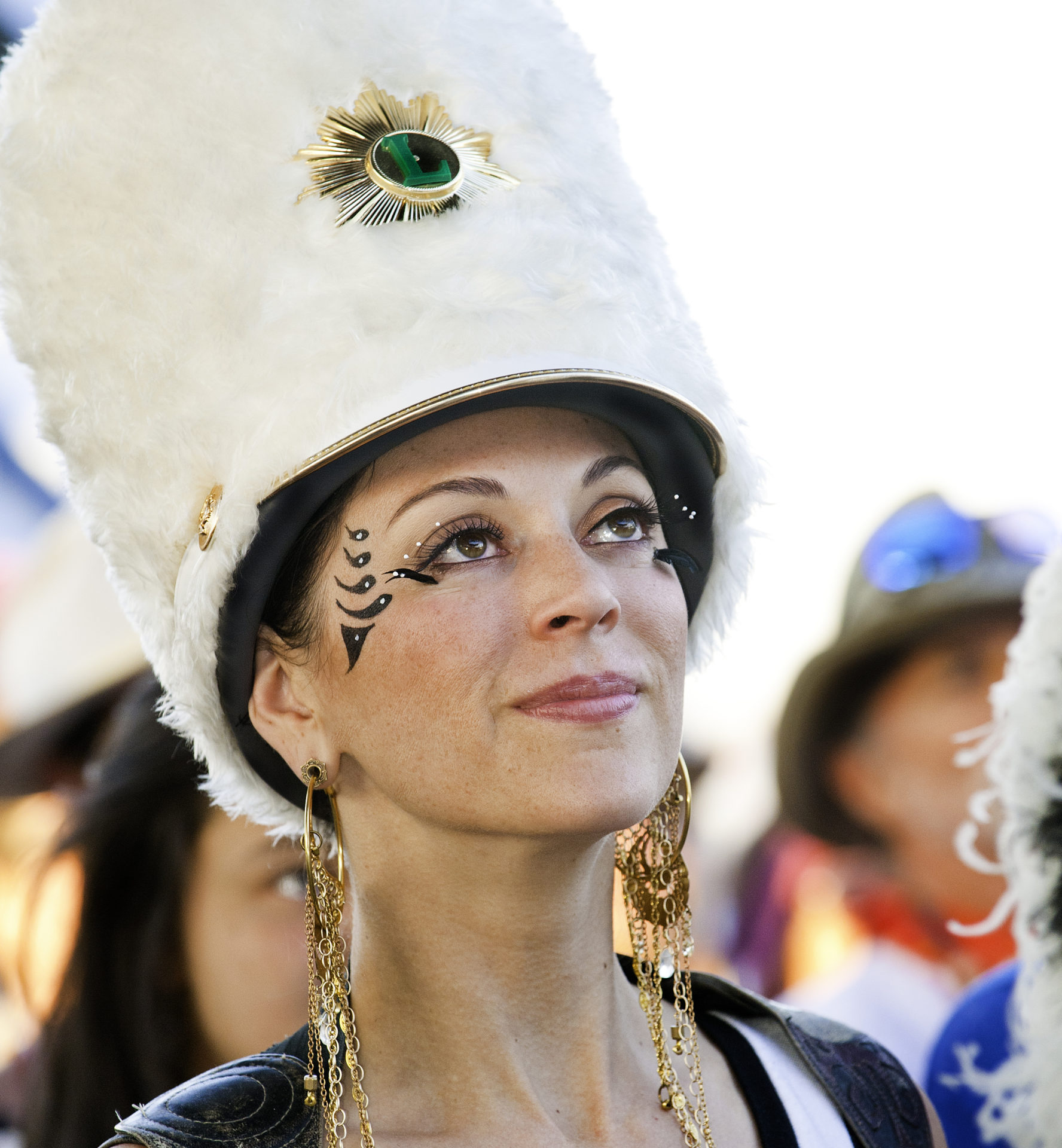 Rosie von Lila
Rosie von Lila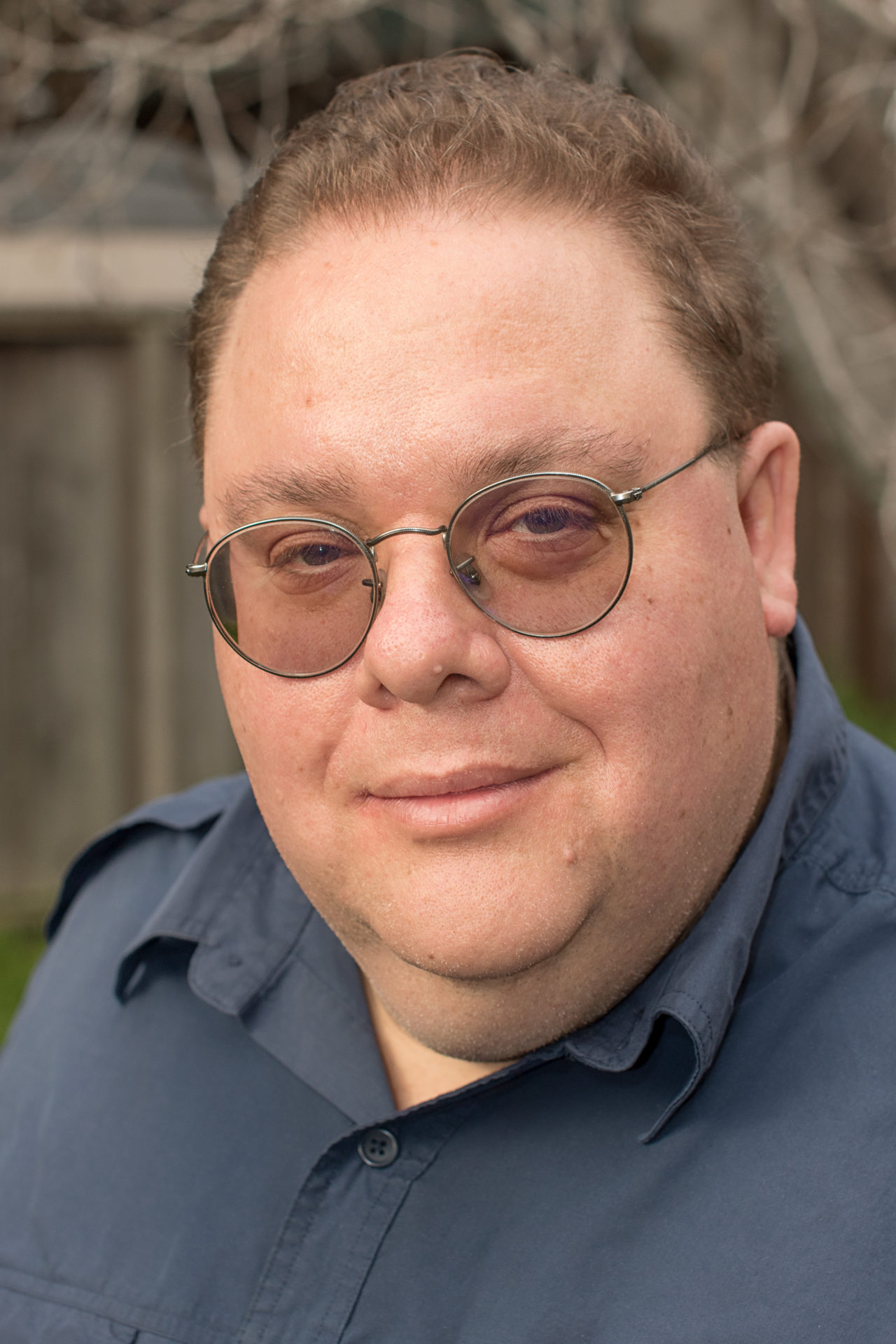 Caveat Magister
Caveat Magister Catherine Connors
Catherine Connors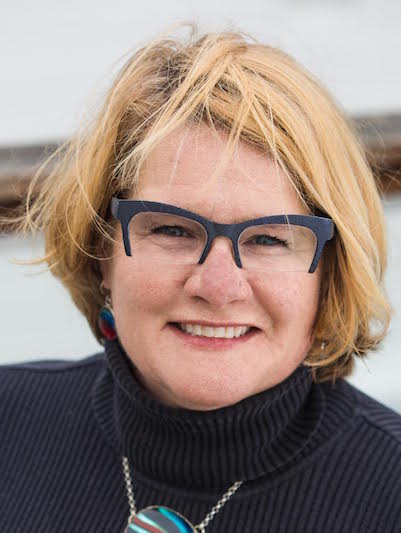 Harley K. Dubois
Harley K. Dubois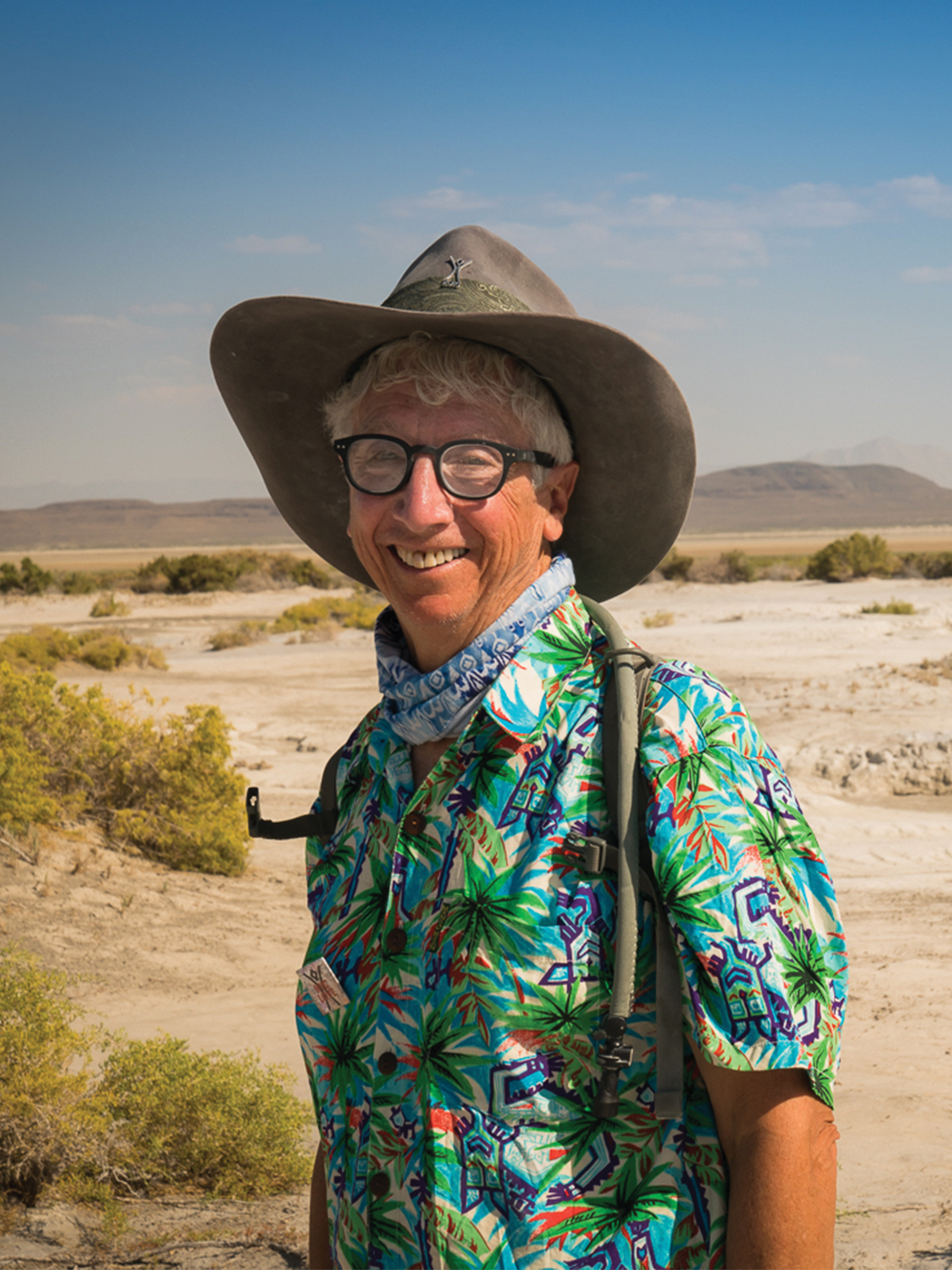 Neil Shister
Neil Shister Quest Skinner
Quest Skinner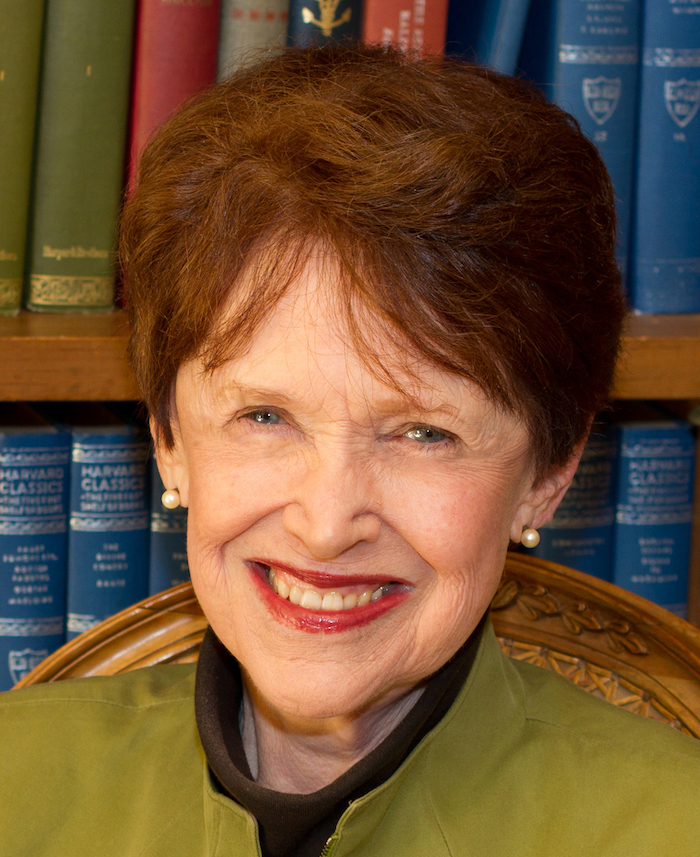 Riane Eisler
Riane Eisler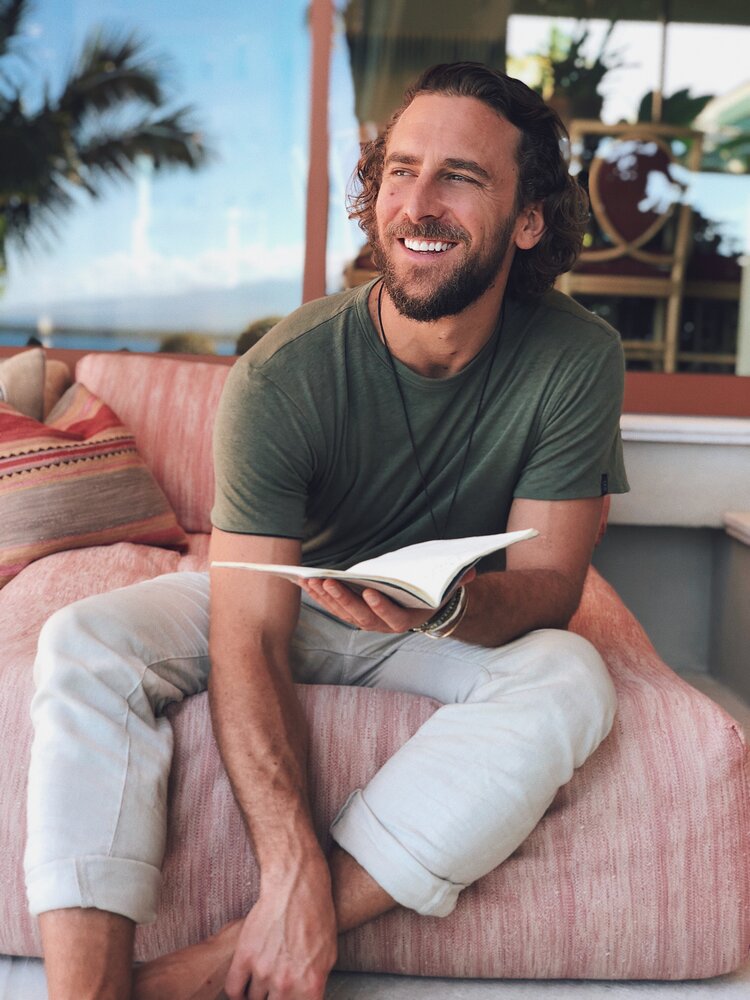 Zach Bell
Zach Bell







